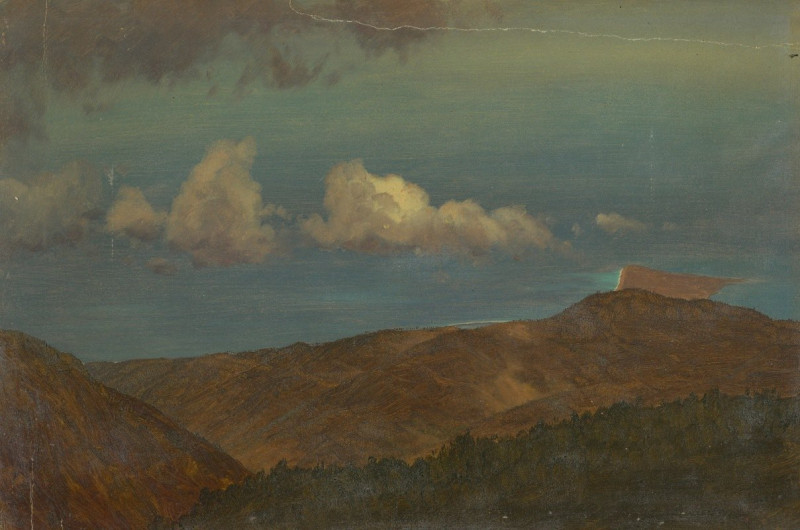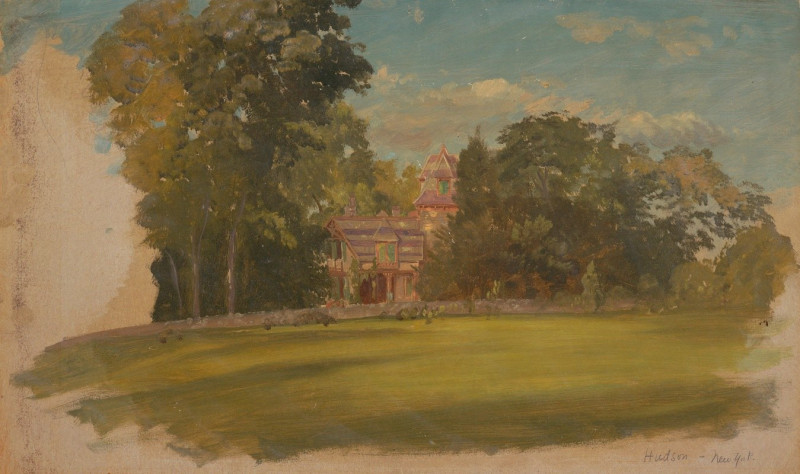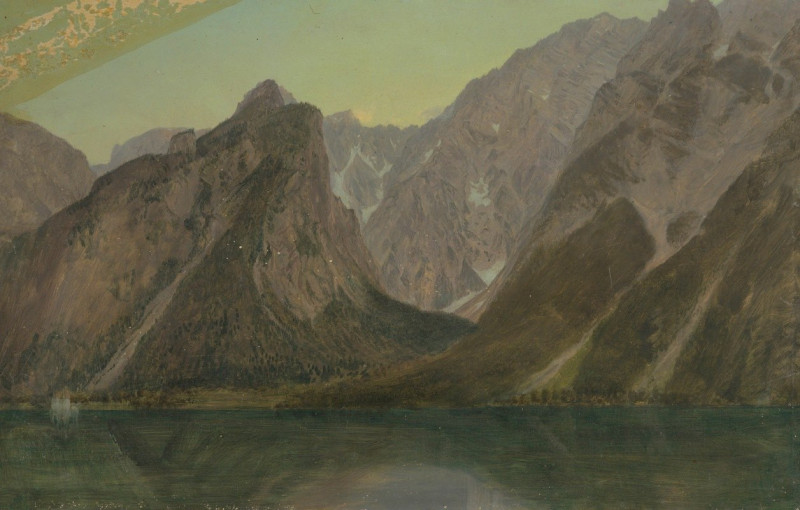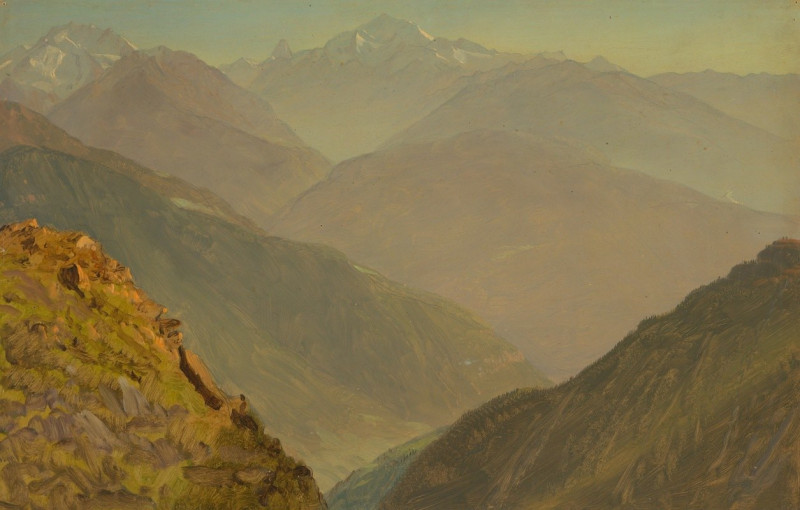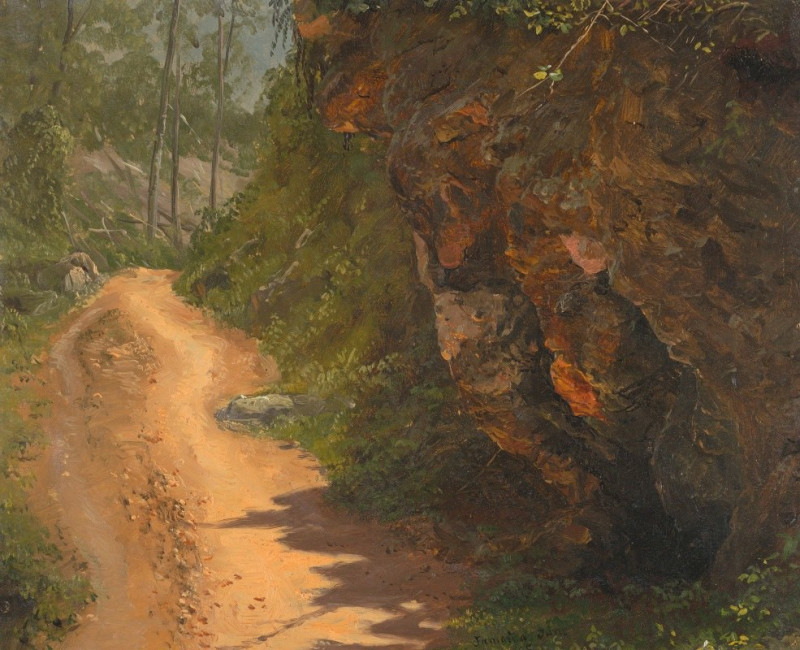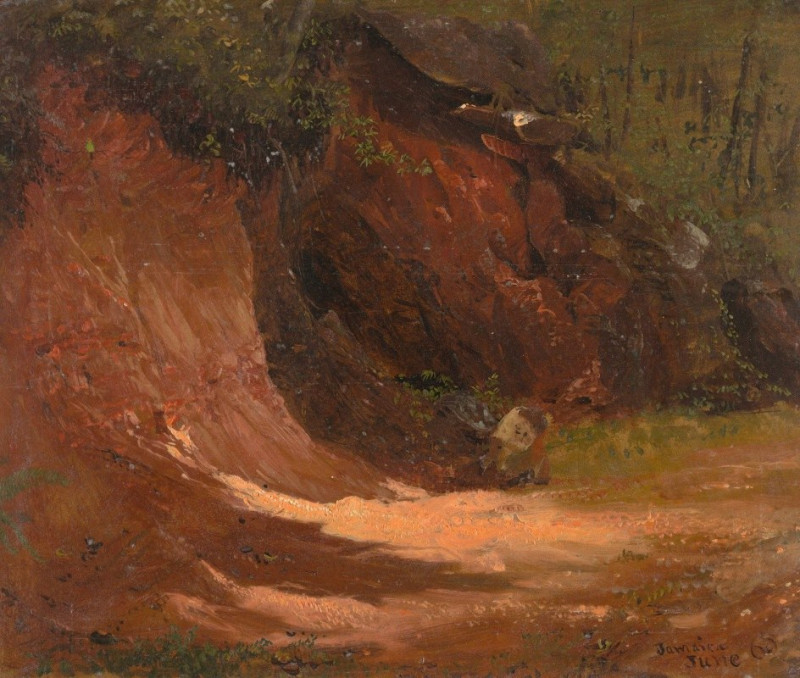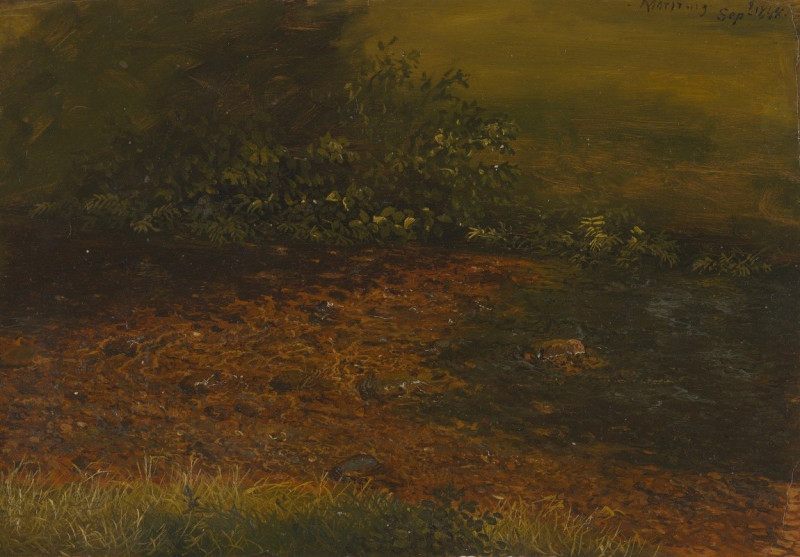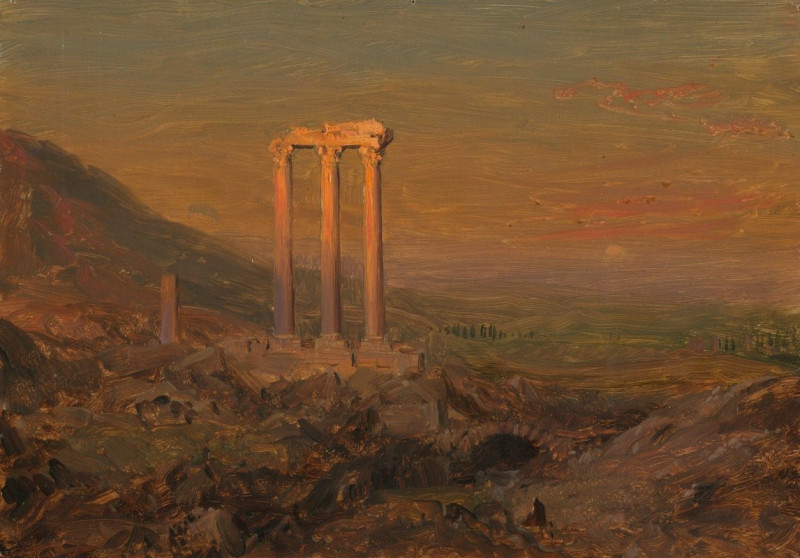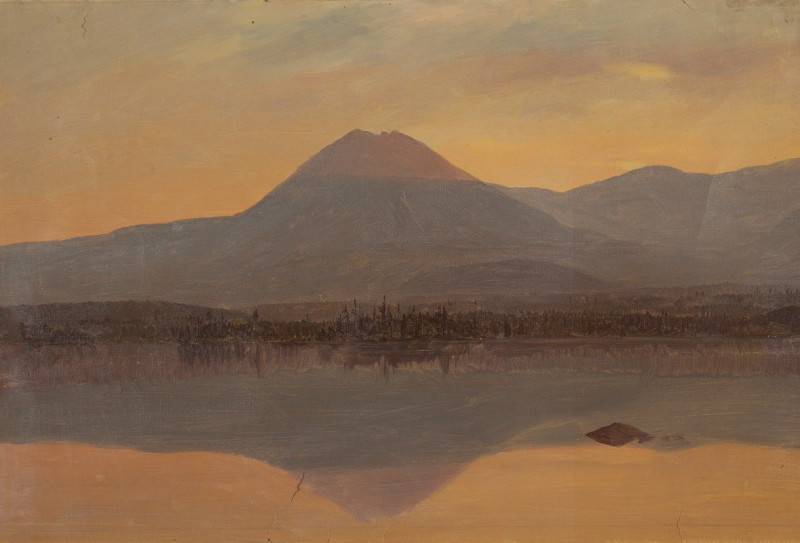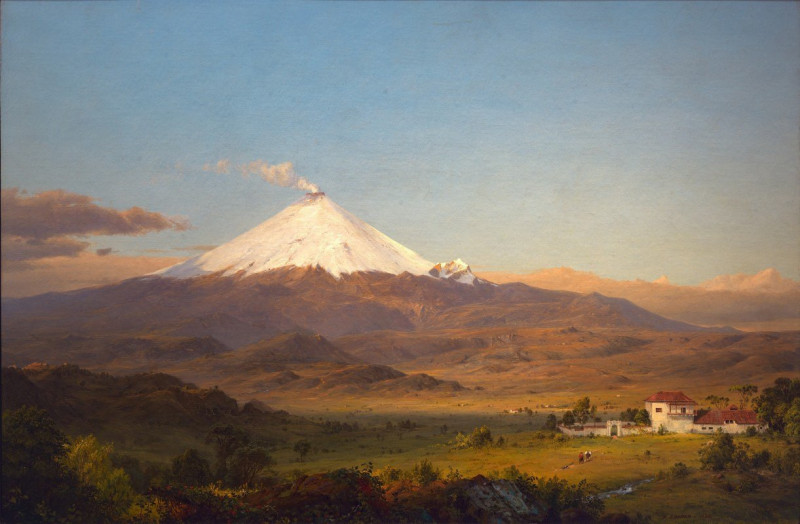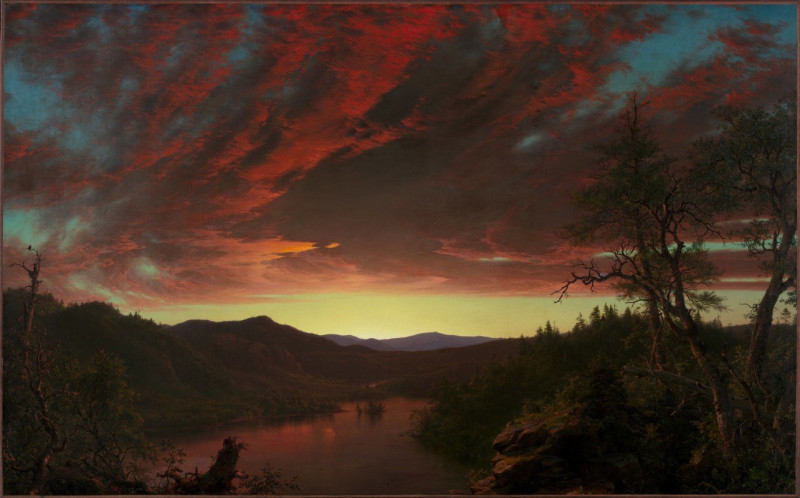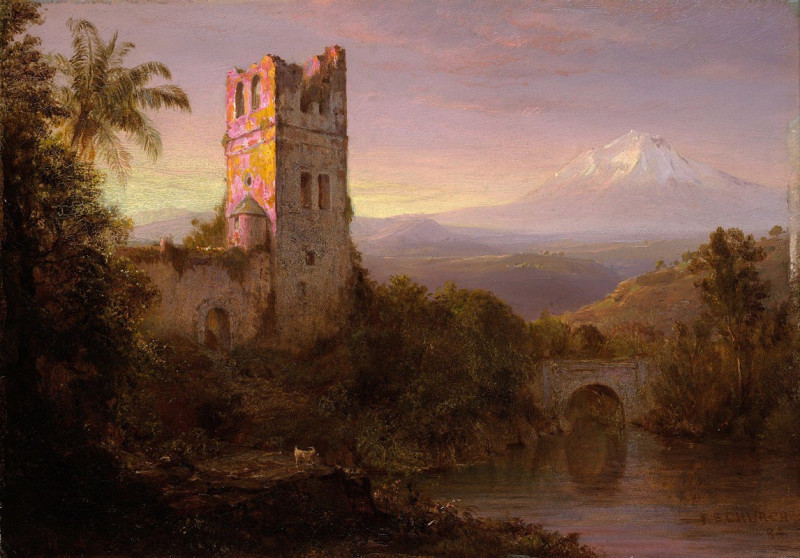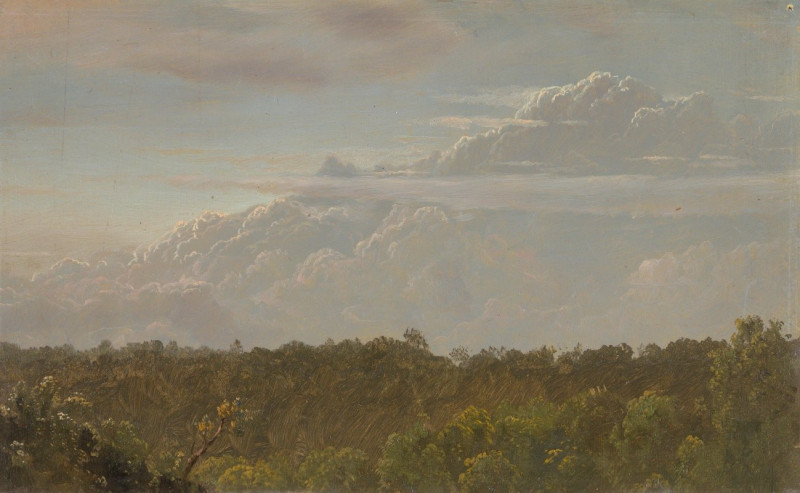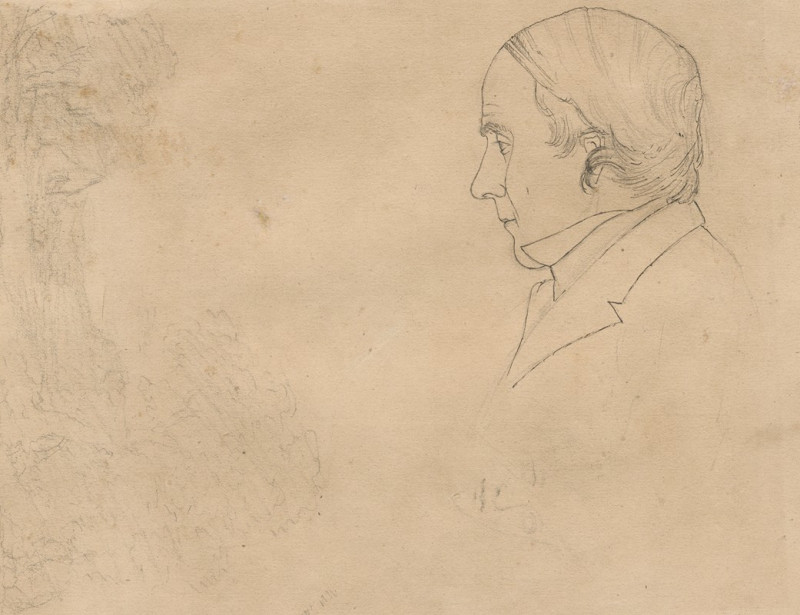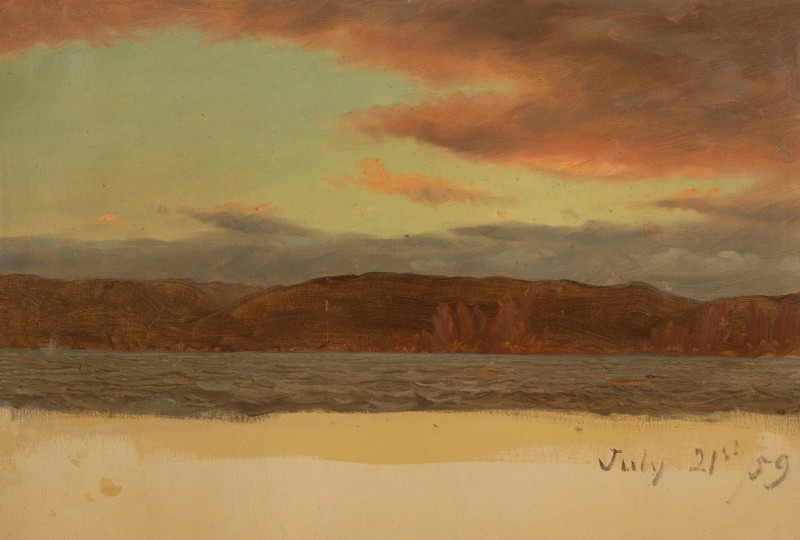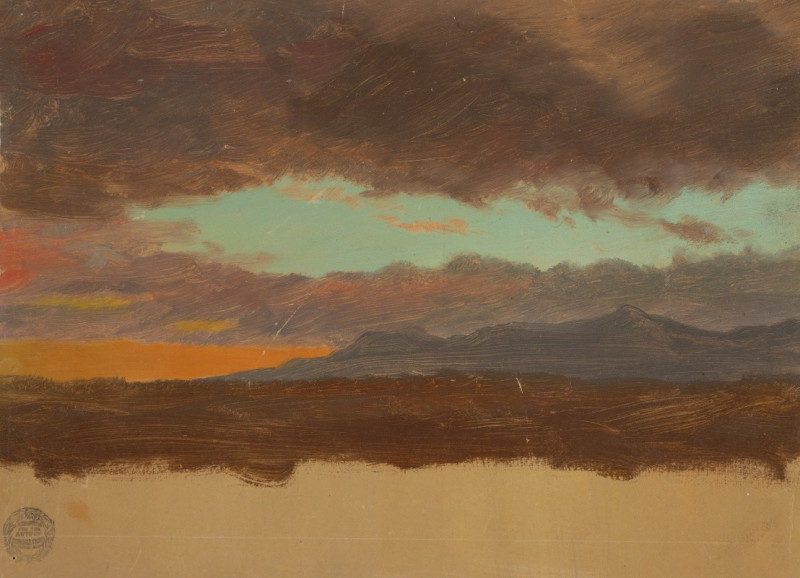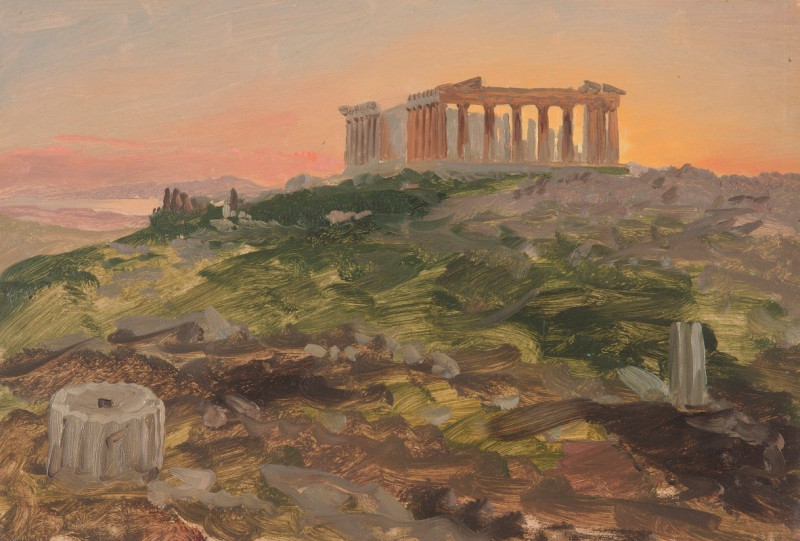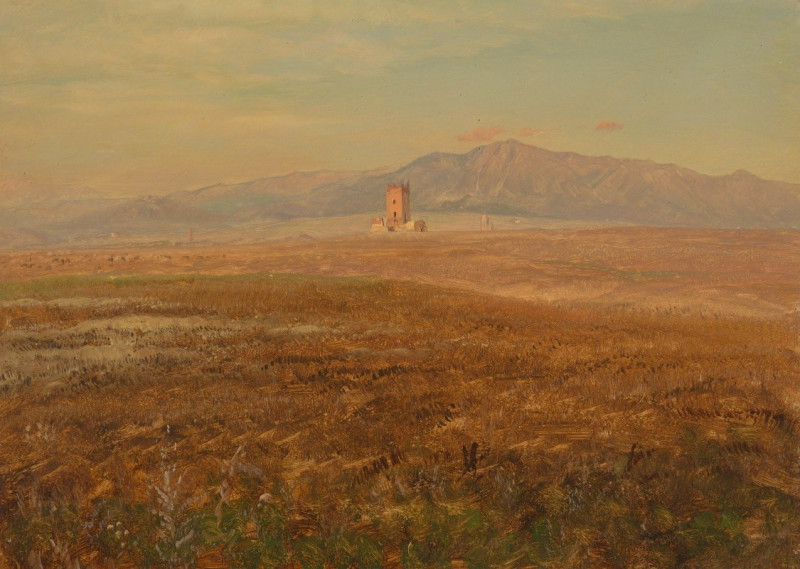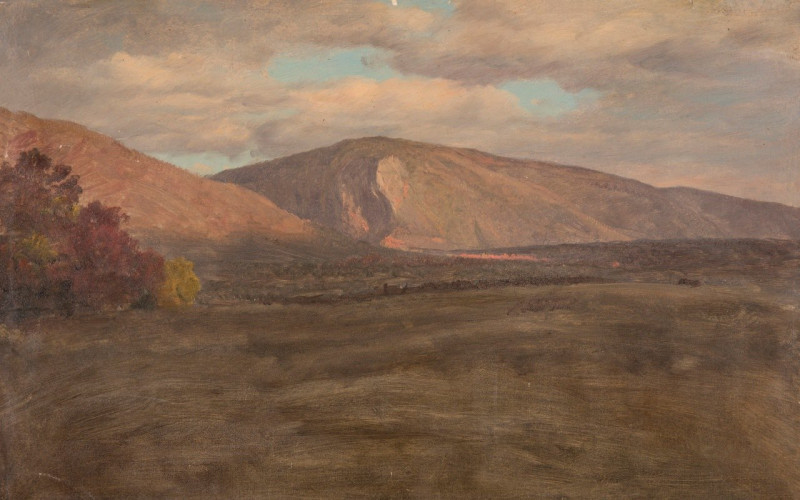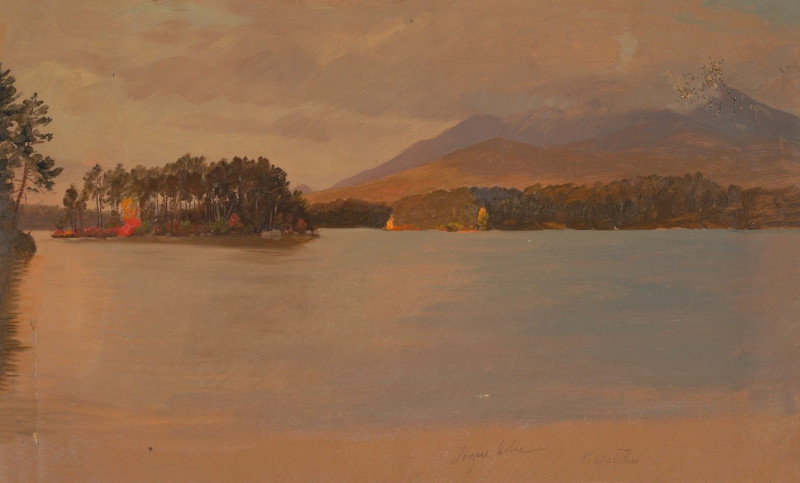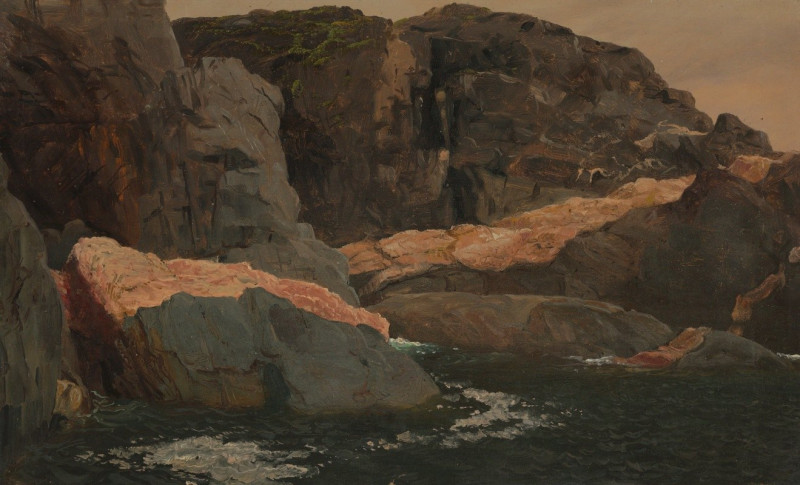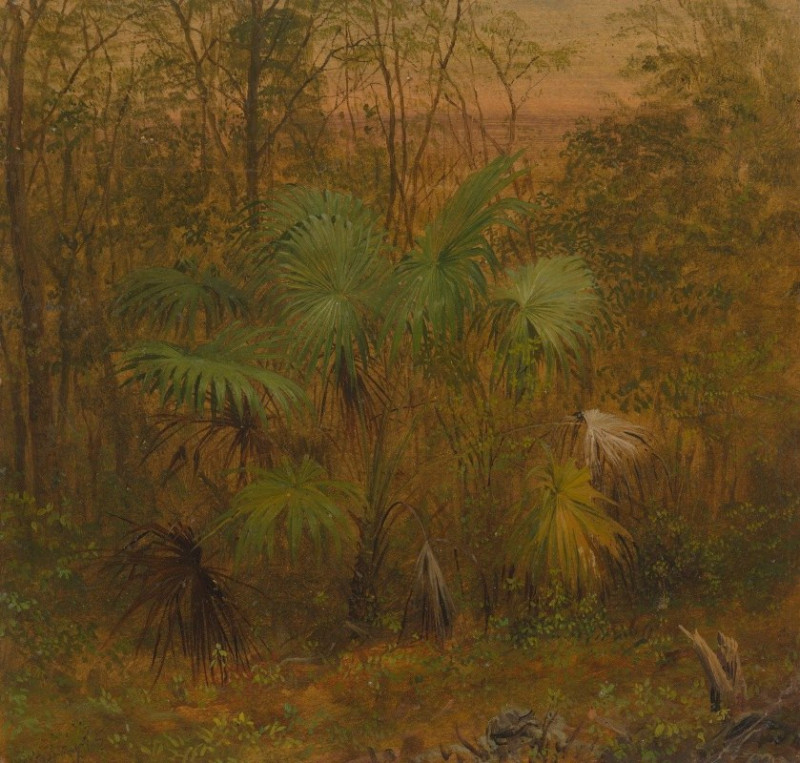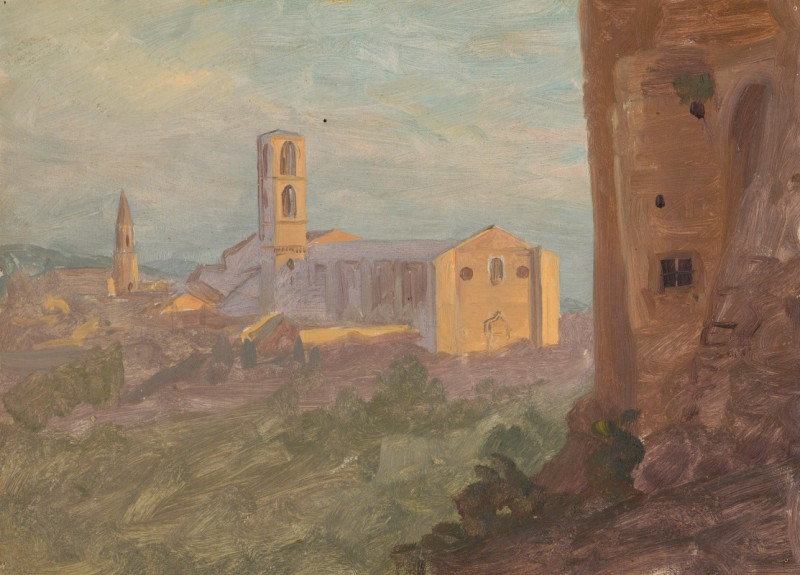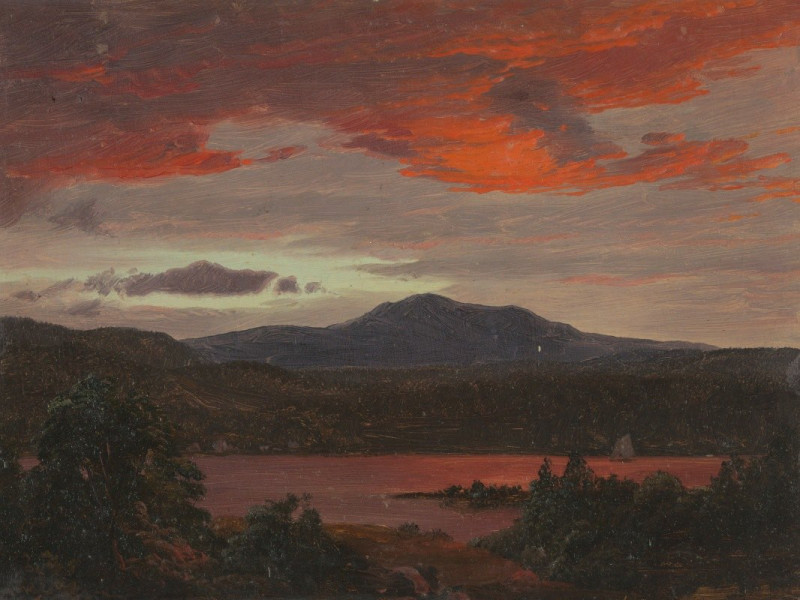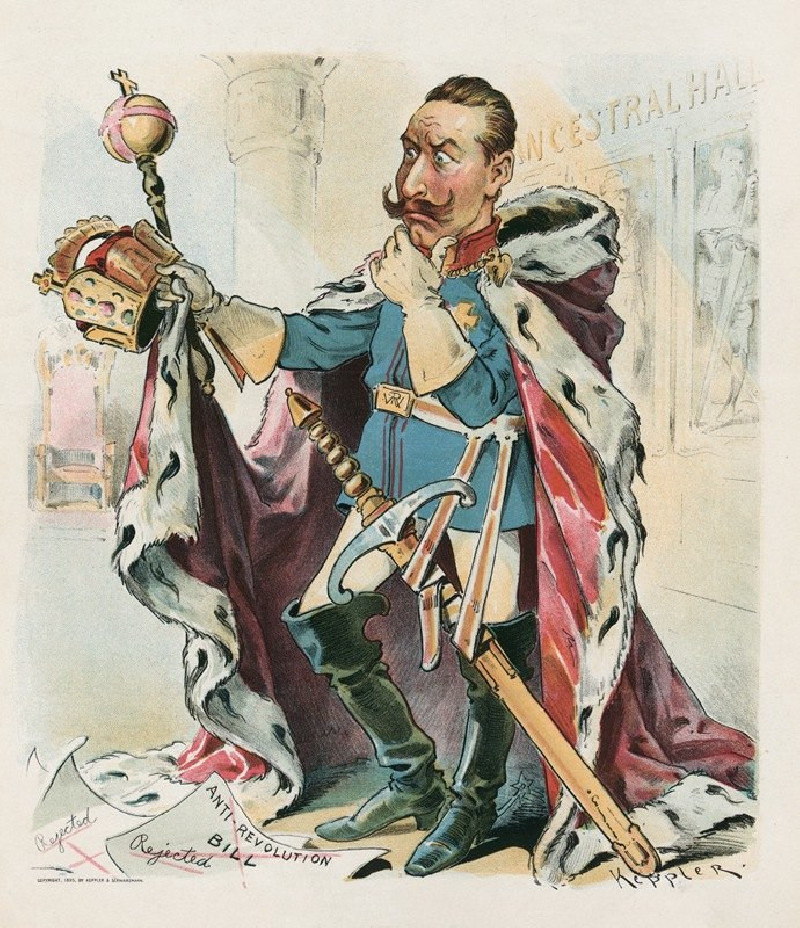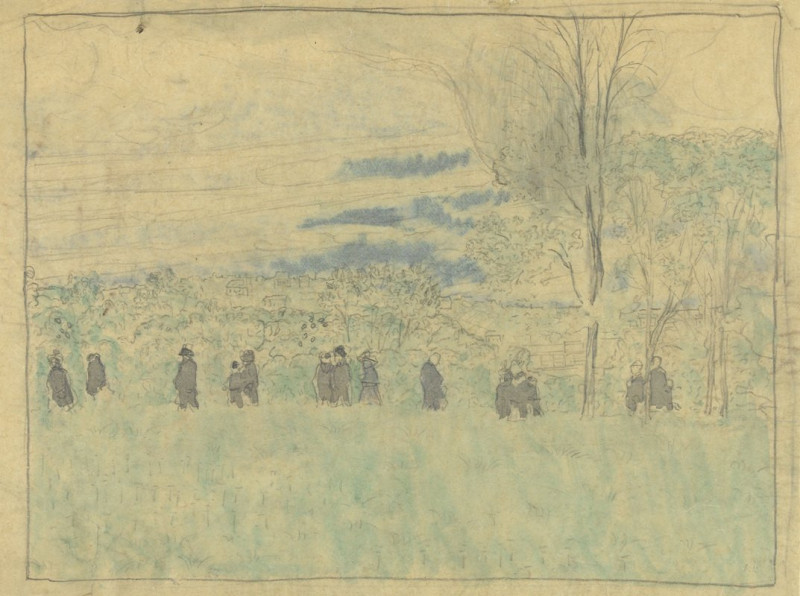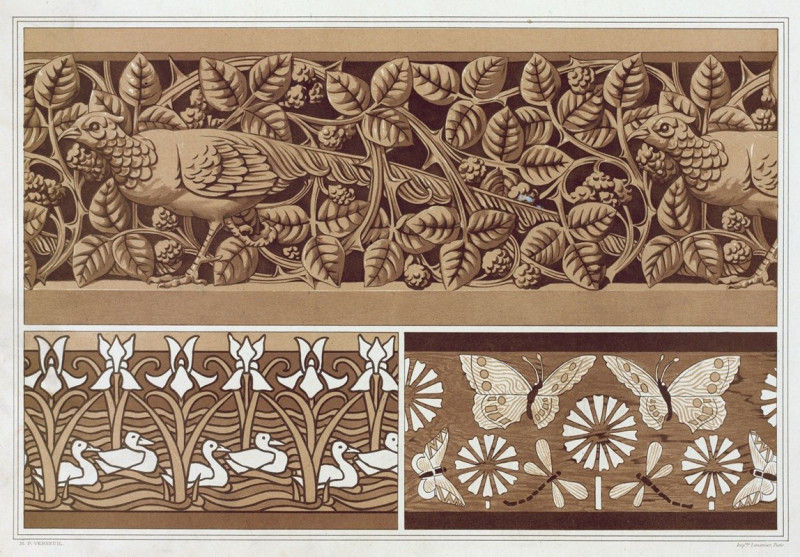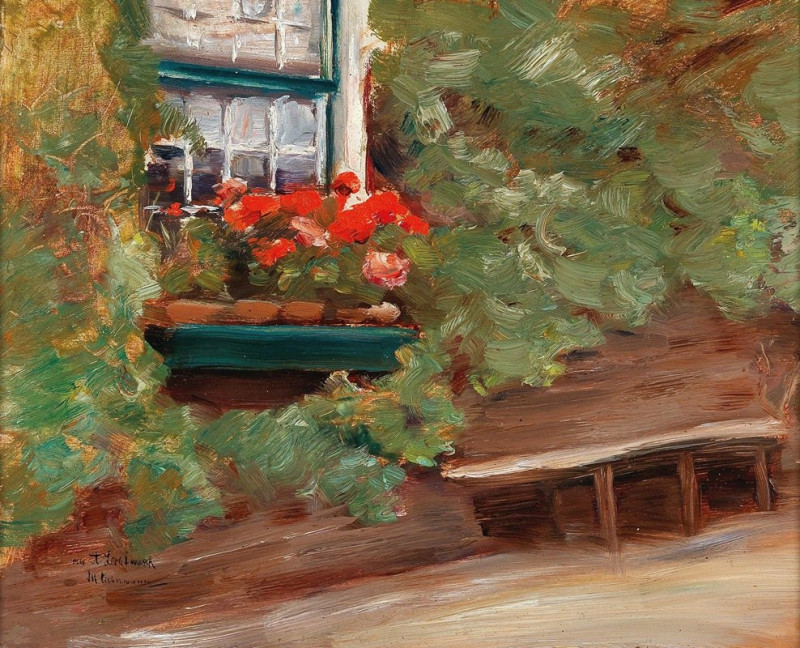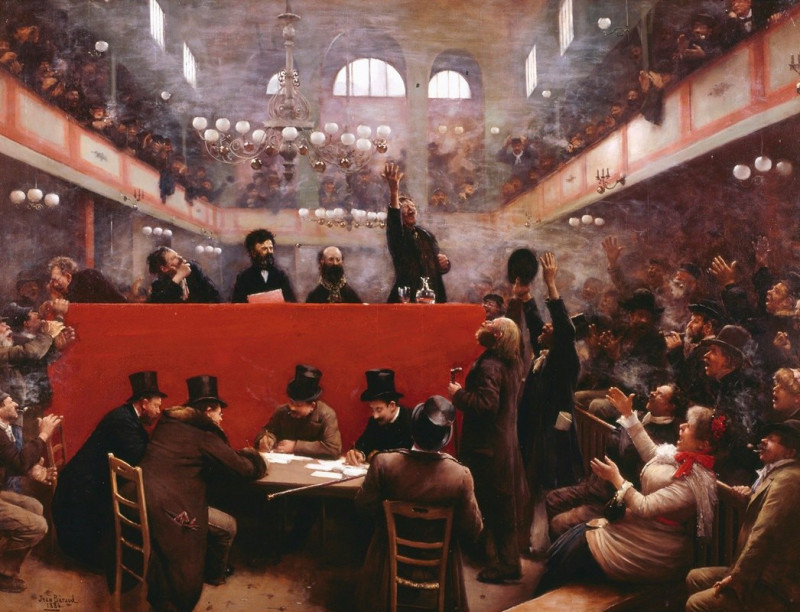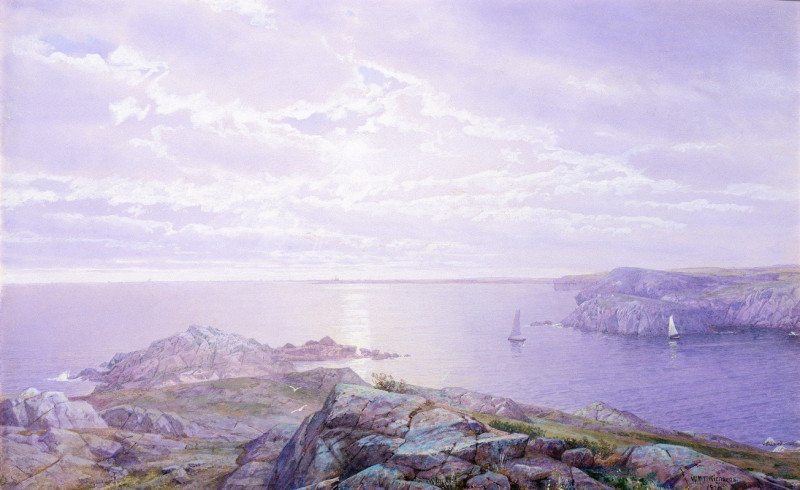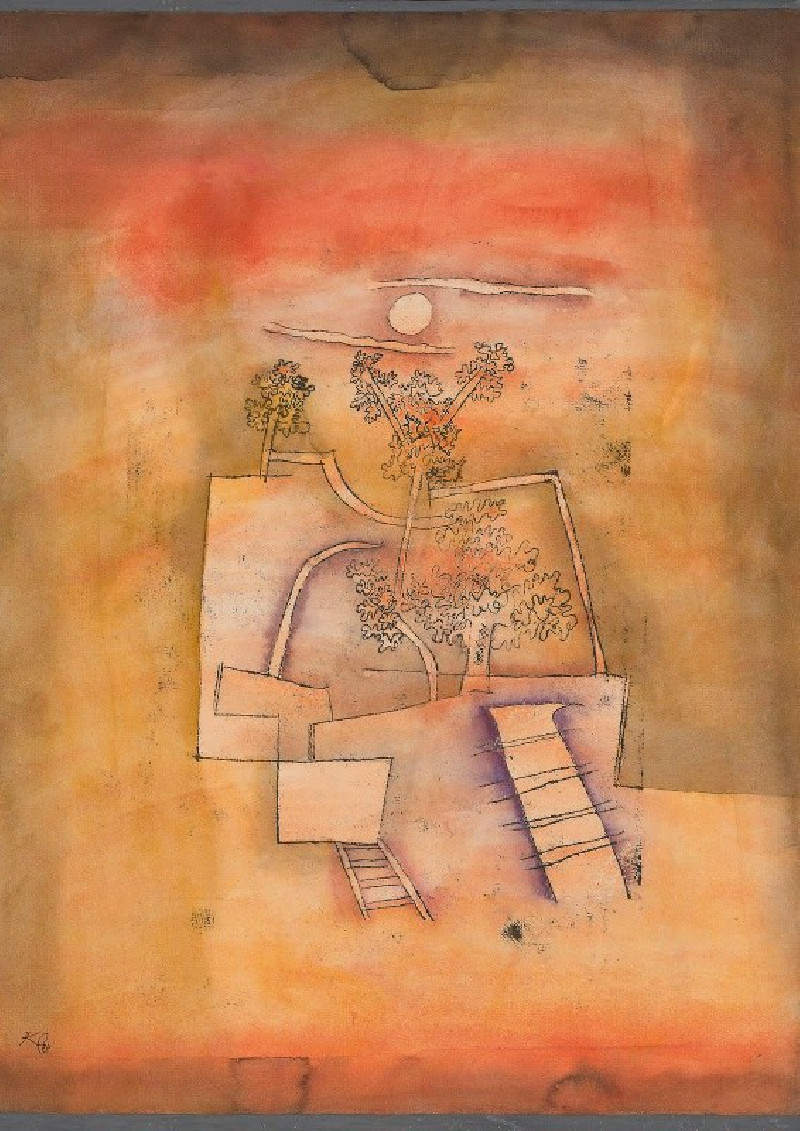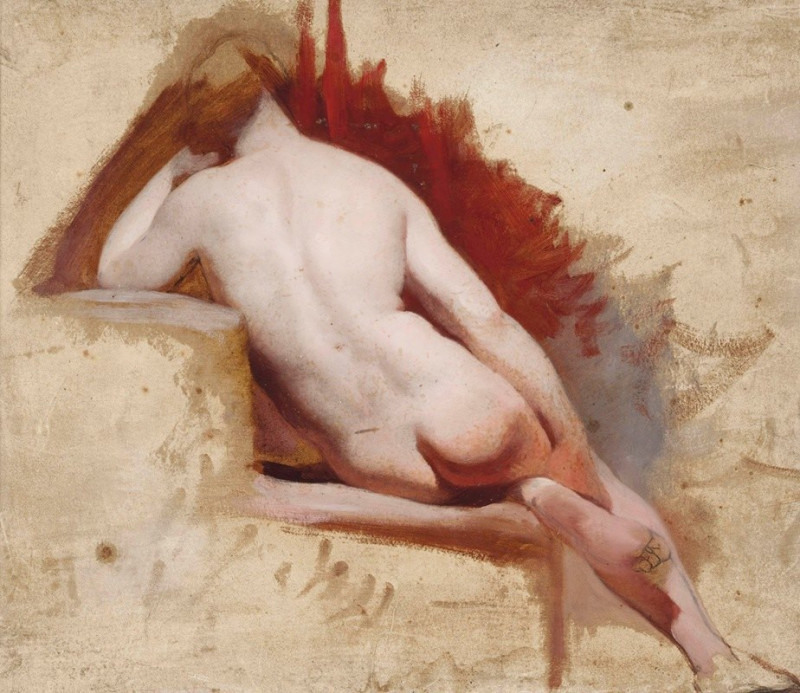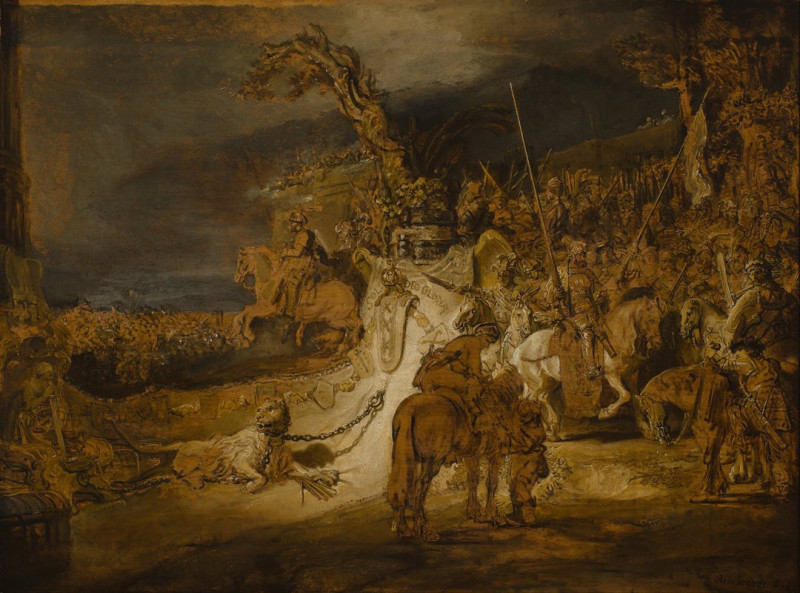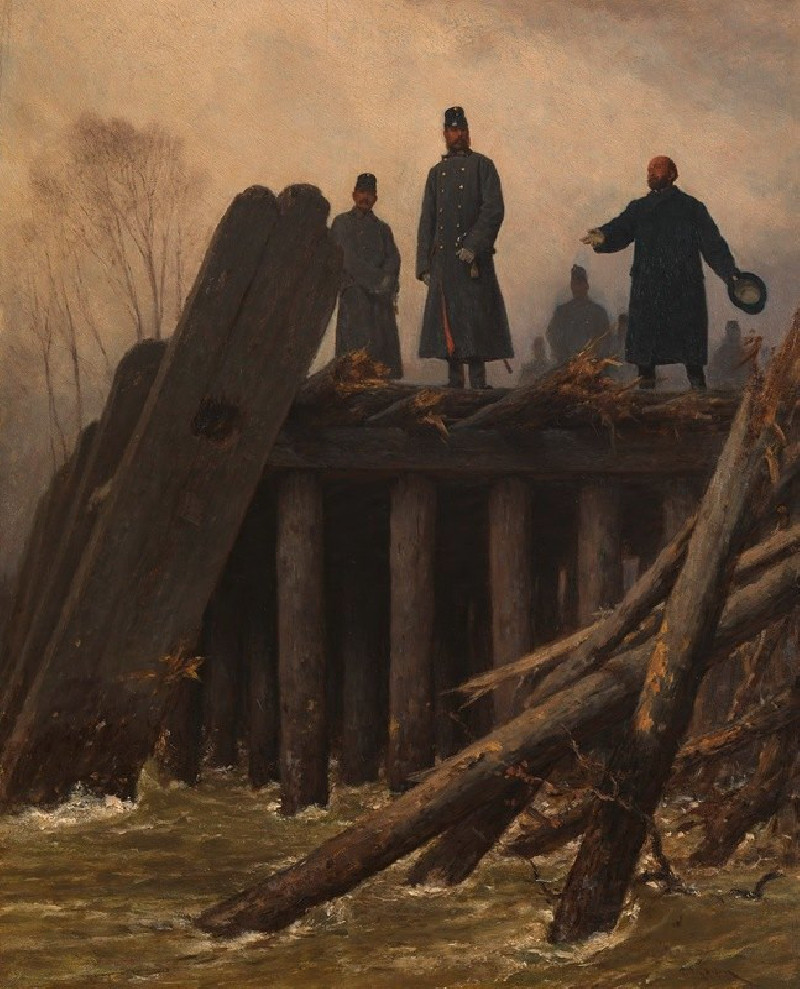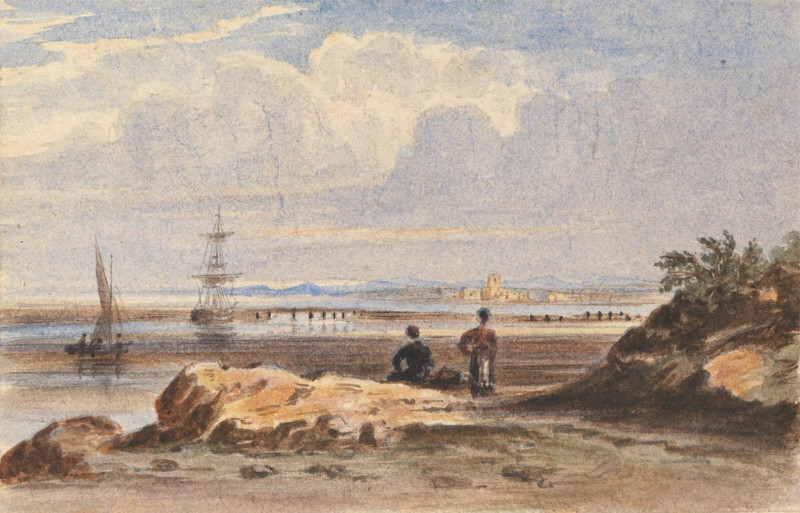Hilly Landscape (1865)
Technique: Giclée quality print
Recommended by our customers
More about this artwork
Frederic Edwin Church, a central figure in the Hudson River School of American landscape painters, meticulously captured the sublime beauty of natural environments. His painting "Hilly Landscape" from 1865 is a testament to his mastery in depicting nature's majestic forms and profound atmospheres.This oil on canvas portrays a scene dominated by rugged, rolling hills that create a textural landscape bathed in a subtle interplay of light and shadow. The foreground features dark, dense foliage that gradually recedes into mid-tones on the hills, illustrating a natural gradient that draws the eye through the composition. The hills themselves are rendered in earthy browns and muted greens, suggesting a late summer or early autumn season.The horizon is marked by a dramatic sky, where lighter, vibrant clouds float above the serene land, contrasting with the darker, more ominous clouds that threaten from above. This sky not only provides a radiant backdrop but also enhances the sense of depth and scale within the landscape.In the distance, a sliver of a lake or sea hints at the broader environment beyond the immediate hills, inviting viewers to contemplate the unseen and unknown. Church’s use of atmospheric perspective – where color and clarity fade with distance – successfully conveys vastness and the sublime essence of the wilderness.Overall, "Hilly Landscape" by Frederic Edwin Church is a magnificent representation of the untamed American landscape, showcasing the artist's skill in using his brush to evoke both the beauty and the emotive power of nature.
Delivery
Returns
Frederic Edwin Church (May 4, 1826 – April 7, 1900) was an American landscape painter born in Hartford, Connecticut. He was a central figure in the Hudson River School of American landscape painters, best known for painting large landscapes, often depicting mountains, waterfalls, and sunsets. Church's paintings put an emphasis on realistic detail, dramatic light, and panoramic views. He debuted some of his major works in single-painting exhibitions to a paying and often enthralled audience in New York City. In his prime, he was one of the most famous painters in the United States.

